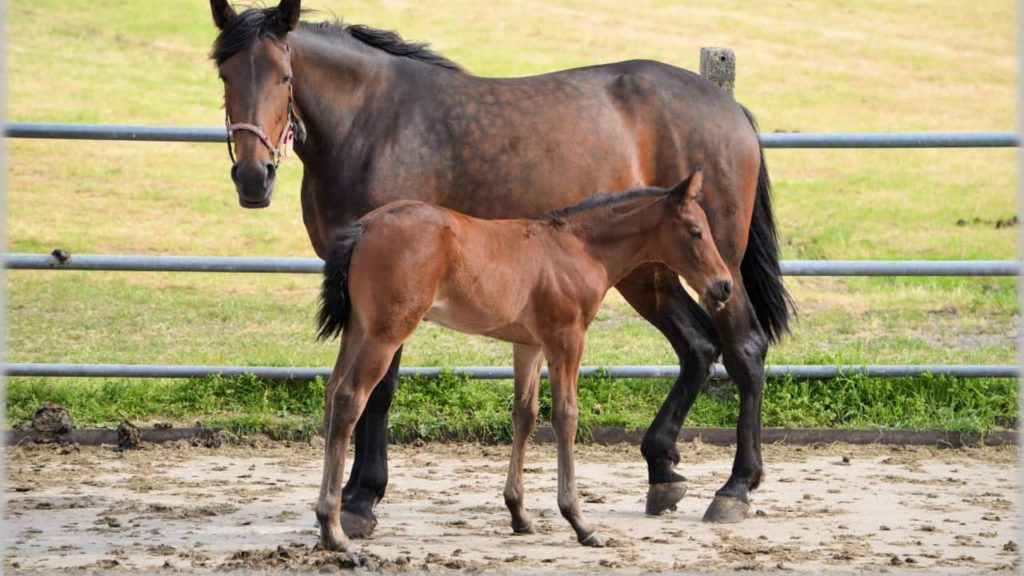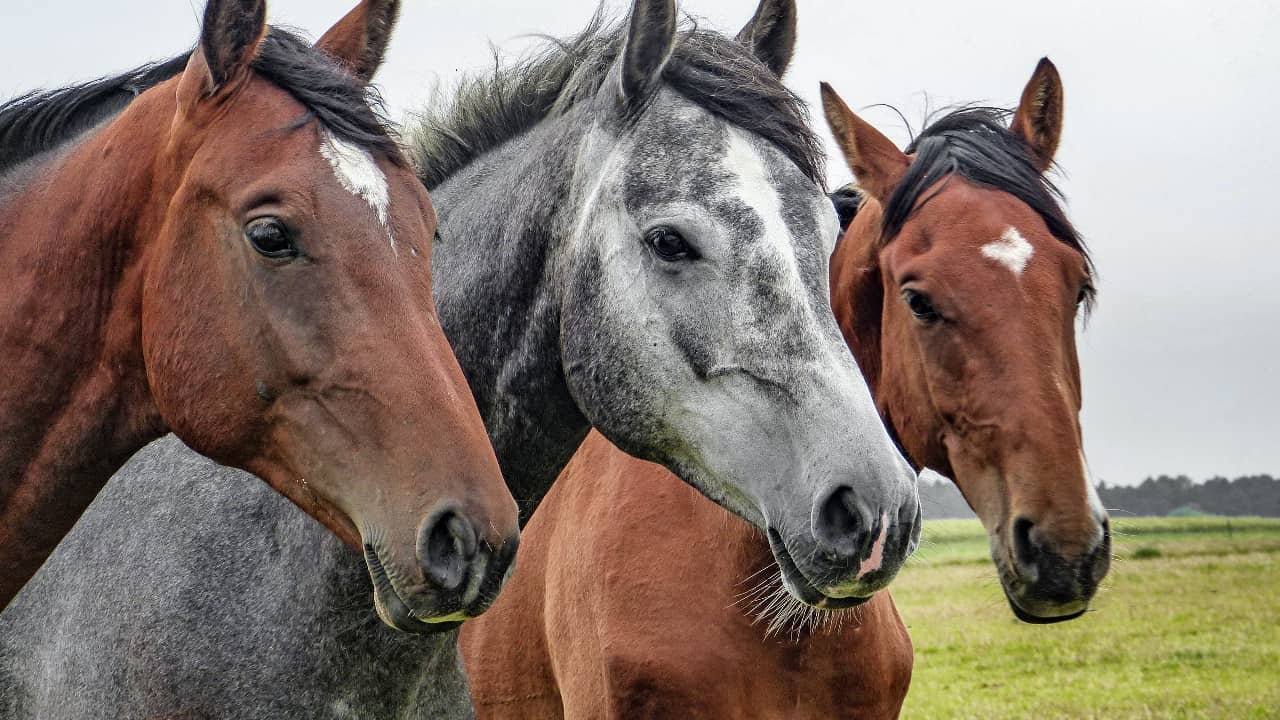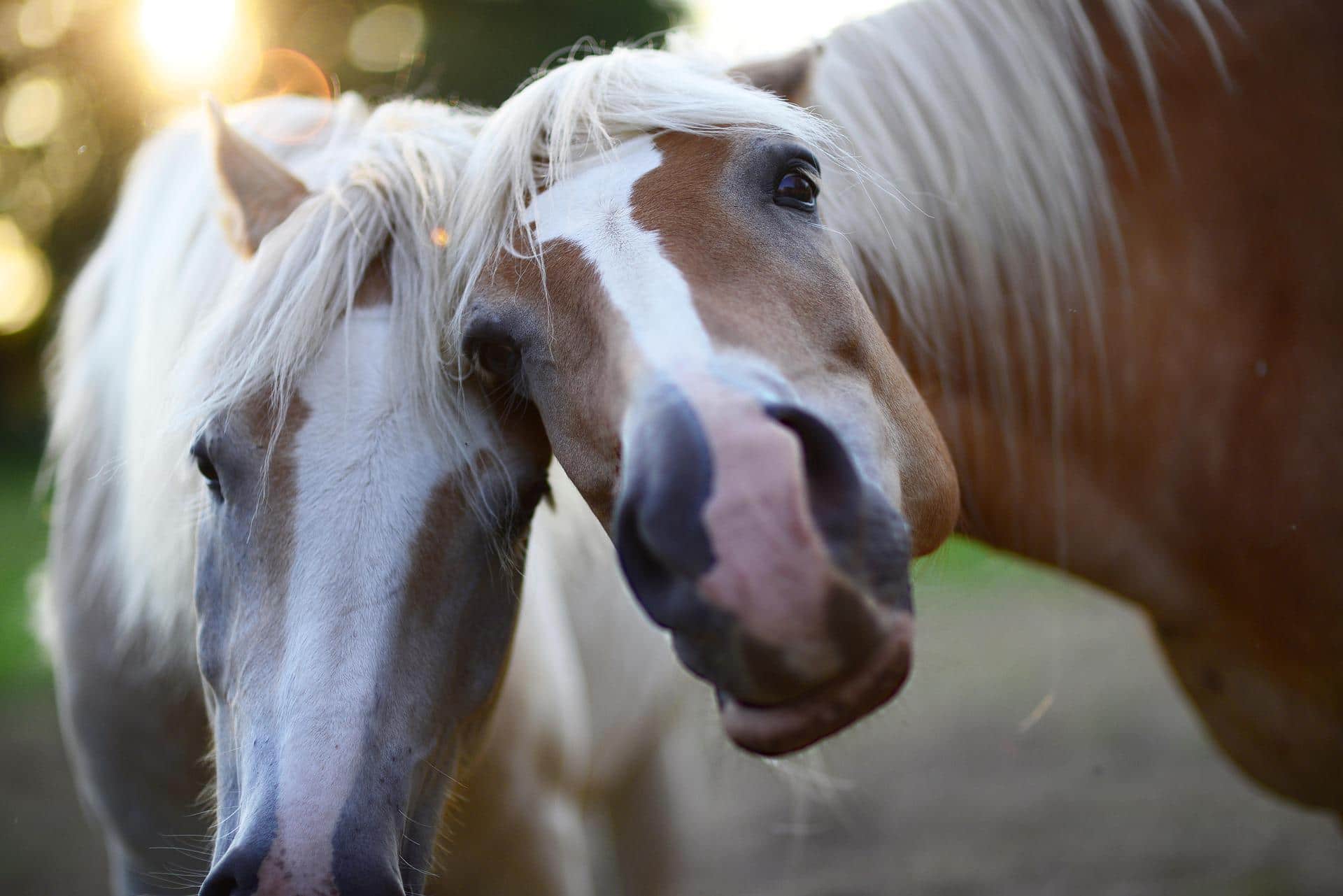Standing next to an adult horse might have you feeling like a speck against a massive, four-legged machine. No doubt, horses grow to a behemoth size which we often take for granted. But even if it seems like your trusty steed’s growth knows no end, it will stop at some point.
So exactly when do horses stop growing? If your worried the space you’ve painstakingly prepared for your horse might not be sufficient to satisfy its adult size, here’s a quick guide to tell you just how big your horse might end up.
Horse’s Developmental Stages

Just like humans, a horse’s growth follows an age pattern. Generally, you can anticipate how big a horse should be depending on how old it is. Keep in mind though that different breeds and other factors play a role in growth rate. So it helps to take this information with a grain of salt.
Conception and Birth
Equine experts begin assessing a horse’s development and life cycle from conception. With an equine gestational duration of 11 to 12 months, mare’s give birth to foals that average 100lbs.
However because of differences in breed sizes, owners can expect their foal to weigh at least 10% of the mother’s weight.
Foal
A baby horse is called a foal. These young growing horses can nurse up to 5 times a day, and will require a milk intake of between 15-25% its body weight. By the age of 2 months, a foal should be able to tolerate some solid food.
On average, they’ll gain 1-3 lbs of weight in day and should display steady growth.
Weanling
At around 3 to 6 months, a foal will stop nursing from its mother. By this time until the age of one, these animals will be called weanlings. You can start feeding weanlings dry food, but they’ll typically have unique nutritional needs versus adult horses.
At this age, your horse should gain between 1.25 and 2 lbs a day.
Yearling
The moment your horse hits the one year mark and until the age of 2 years old, it’s called a yearling. By this age, your horse will enter a rapid growth spurt.
At 12 months, a yearling would have reached 65% of its adult weight and 90% of its maximum height. By 18 months, the yearling should weigh 75% of its adult weight, and measure 95% of its adult height.
Adolescent
At 2 years old, your horse is considered an adolescent. Growth would have significantly slowed down at this point. Instead, your horse will start to look more muscular instead of lean and slim.
Although they might seem ready to ride, young horses should be allowed to achieve proper bone development during this period.
Adult
Majority of breeds enter their adult years at 4 years old, but some tall, heavy breeds may continue to grow until the age of eight.
At this age, a horse’s growth slows down. When the horse stops growing, its growth plates will completely fuse, so any growth beyond that point will be minimal at best.
Senior
At 16 years old, a horse will be considered a senior. Because of muscle atrophy associated with aging, its possible that your horse might start to drop a few pounds. You’ll also notice their bones jutting out of their hips and their back. Changes in their posture might also make them look smaller than they were as an adult.
If you acquired a horse and you’re not sure how old it is, you may have to bring it to the vet to get a proper assessment. A horse’s teeth will only accurately tell of its age until it’s 8 years old. If it’s older than that, your vet might have to use other techniques.
Growth Rate for Different Breeds
Generally, all horse breeds would have reached 90% of their adult size by the age of 2 years old. They will then achieve the remaining 10% of their size over the course of the next 2-3 years. But there are exceptions to this growth rate estimate.
Larger breeds like draft horses may continue to grow until the age of 8 years old. So anticipating how big your horse will get also depends on its specific breed.
- Arabian horses – Maximum size at 6 years of age; 800 to 1000 lbs in weight
- Draft horses – Maximum size at 8 years or more; 1,400 to 2,000 lbs in weight
- Quarter horses – Maximum size at 5-6 years of age; 900 to 1250 lbs in weight
- Thoroughbreds – Maximum size at 5-6 years of age; 900 to 1,100 lbs in weight
- Warmbloods – Maximum size at 6 years of age; 1,200 to 1,300 lbs in weight
Across the board, Arabian horses tend to be the smallest of the breeds discussed. You can chalk this up to Arabian horses skeletal structures. With one fewer vertebrae and lacking one pair of ribs versus other horses, Arabians can max out at 1000 lbs.
It’s also worth mentioning that a female horse tends to weigh less than a male. So for instance, a draft horse of mature height might measure slightly up to 5% taller than a female at her maximum height.
Many other factors impact horses growth. A proper diet can fortify horses bones and encourage the growth plates to expand while the horse is young.
Proper care of a horse’s hooves can also support proper growth. Normal hoof health and condition gives the horse better balance, allowing the animal to optimize its weight distribution throughout the limbs and prevent angular limb deformities. To learn more read our article on the reasons horses wear shoes.
How Can You Tell When Will a Horse Stop Growing?

It would be nice to get definitive knowledge on exactly how tall a horse will grow so you can make the proper preparations for its adult size. But even with all of the research and information we have about different horse breeds and their sizes, there’s no way to tell for sure just how big your horse will get.
However there are some factors you can look at to get a better idea of how tall a horse will get as it ages:
Parents’ Height and Weight
How tall were the animal’s parents? Just like humans, a horse’s adult size can (in part) be predicted by taking a look at its genetics. If you have a new horse with large parents, it will likely grow up to be within the same size range.
Same Horse Breeds in the Area
If you’ve got friends who also raise horses, you can ask if they have a horse of the same breed. Of course, what they feed their horse and how they take care of it will play a role in how big it gets. Nevertheless, these other horses should give you some idea.
Size at One Year
Remember that by one year of age, most horses would have reached around 90% of their adult, fully developed size. So you can expect that your horse will grow by just a few extra inches after the one year mark. Keep in mind however that there are some horses that continue to grow up to 8 years of age.
Leg to Body Ratio
Equine experts claim that a horse’s leg length will remain relatively static throughout its life. Although all foals tend to look lean and lanky on its clumsy stilts, some of them may have much longer legs than others. If your horse touts a set of extra long legs, you can expect that it might grow to become a tall horse.
How to Tell When Horses Stop Growing
It’s important to make sure your horse is the right size and maturity because training horses at a young age can damage its joints and cause problems later in life. You’ll need to reverse damage caused and treat using horse joint supplements + more, which is not ideal. That’s why as a horse owner, you need to make sure your horse is big enough and mature enough to ride and train.
So when do horses stop growing?
There’s no magic number that tells us exactly when a horse has stopped growing or when it might have reached its mature size and height. But if you take measurements of your horse with a tape measure, you’ll notice that it might slow down or stop growing after about four to six years of age (for majority of breeds.) Again, some horses don’t stop until after they’re eight, like draft horses.
Remember though that a horse’s height isn’t the only marker of healthy growth. As they enter their adolescent years, horses pack on more muscle and fat tissue, giving them a bulkier appearance. Unseen to the naked eye, horses also increase in bone density as they age, which is another factor experts consider when assessing maturity.
When is a Horse Grown Enough to Ride?
It can be exciting to explore the prospects of training and riding a growing horse. But before you saddle up, you have to consider its size, age, bone growth, and maturity.
It’s not uncommon for rescuers to find with abandoned racehorses suffering from developmental orthopedic diseases and angular limb deformities because of premature training and riding. Thus its important to wait for a horse’s skeletal system to mature and develop properly before starting any training.
There’s no specific physical marker of horse growth that tells us when it’s safe to start riding and training a horse. And although some horse owners claim that the age of 2 would be enough to start a horse on work and training, experts recommend waiting at least until the 4th year.
To be doubly sure that your horse is ready, mature, and grown enough to start intensive training, we even urge horse owners to wait until the horse is almost 6 years old.
When Do Horses Reach Full Emotional Maturity?

There’s more to horse growth and development than just size, height, and weight. Just like humans, horses also develop emotionally. Waiting for your horse to be the right emotional maturity before starting training can save you a world’s worth of trouble and stress.
When a horse starts training and riding before they reach the ideal level of emotional maturity, it’s possible that the animal might respond poorly to your training. Aside from being stubborn and difficult to work with, the animal might also display unwanted behaviors like biting and kicking.
It’s also common for emotionally immature animals to struggle with understanding commands. So you can try and try to get them to understand your instructions, but their level of emotional and mental maturity might keep them from comprehending what you’re trying to get them to do.
Horses reach their peak emotional maturity between the ages of 5 and 7. By this time, the mature horse should be able to understand more complex commands and receive instructions with little to no ambivalence.
How to Measure a Horse’s Growth
Horses are measured in ‘hands’ which is essentially equivalent to four inches. When measuring a horse’s growth, owners can assess two different aspects:
Height
A classic tape measure is all you’ll need to measure your horse’s height. Before you begin, make sure your horse is well fed and satisfied to keep it from moving around so much, and that it’s standing on level ground.
Height is typically measured from the ground up. Stretch it straight upwards until the horse’s withers – the highest point of the horse’s back, just behind the shoulders. Make note of the horse height in inches, and divide by four to get how many hands tall the horse is.
Weight
The best way to get an accurate weight measure would be to take your animal to the vet. Most clinics for horses have an appropriate weighing scale that can measure the weight of a horse.
You can also take your trailer to a weighing facility and weigh it with and without your horse inside. Then simply subtract the two numbers and the difference would represent your horse’s weight, albeit slightly inaccurate.
Finally, you can try weight measuring tapes. This tape measure is specifically designed to provide an estimate on a horse’s weight based on its girth. Simply measure around the horse’s body, just behind the withers. The tape should read an estimated total body weight for your animal based on its girth.
Frequently Asked Questions
When do quarter horses stop growing?
Quarter horses take about five or six years to reach maturity. Certain types of the quarter horse breed may take just four years, so it pays to know what specific kind of quarter horse you have to get a more precise time table.
Will a three year old horse grow anymore?
Yes, but only by a few extra inches (depending on the breed.) Generally, horses reach 95% of their total adult height by the age of 2 years, and they’ll fill up the remainder within the next two or three years.
So for most breeds, their third year marks a time of continued growth and development, not only physically, but emotionally and mentally as well.
At what age is a horse considered full grown?
Although some breeds take as much as six or eight years to stop growing, experts agree that a horse is considered fully grown by the age of four.
Most breeds may begin training at this age, but it wouldn’t hurt to wait an extra year or two before you start rigorous training to allow the growth plates to fuse properly.
How much taller will a two year old horse grow?
Most horse breeds grow to 95% of their mature adult height by the age of two. This means that your horse will only have about 5% of its total height left to fill out over the course of the next few years.
To get an estimate, divide how many inches tall your horse is by the percentage of its growth (90% for a yearling, and 95% for a 2-year old), and multiply by 100. This should give you a rough estimate of how many inches the horse has left to grow before it reaches its final height.
Over to You
Any owner wants what’s best for their horse. And by getting an idea of how big your horse might get, you can make the proper adjustments to their space, diet, and care to achieve those expectations.
So, when do horses stop growing? That depends on a number of factors. But by giving your horse the proper nutrition, care, attention, and an overall healthy life, they should achieve optimal growth and development, not only in size, but also in their mental and emotional capabilities.




